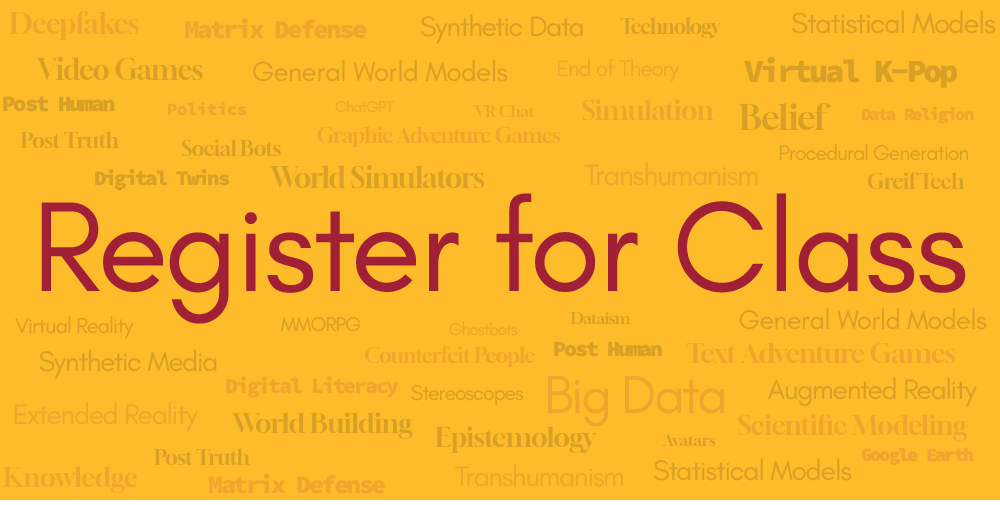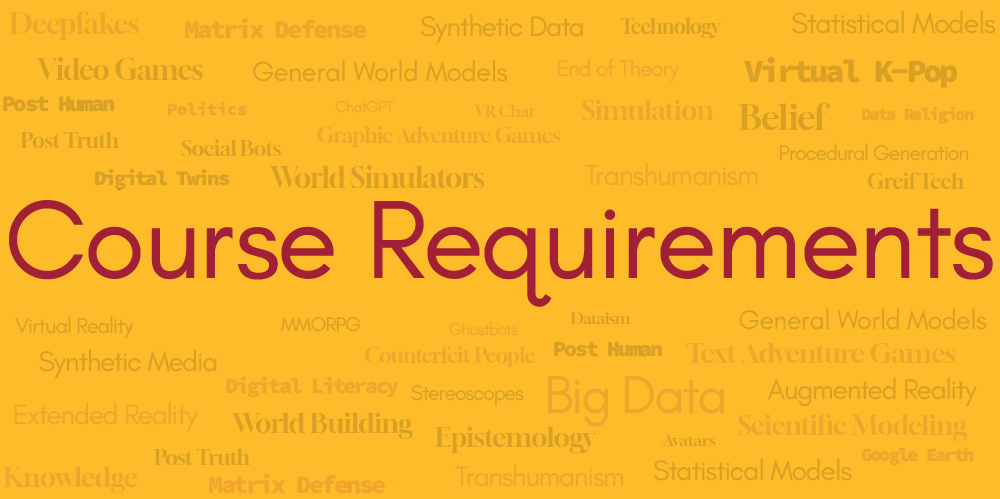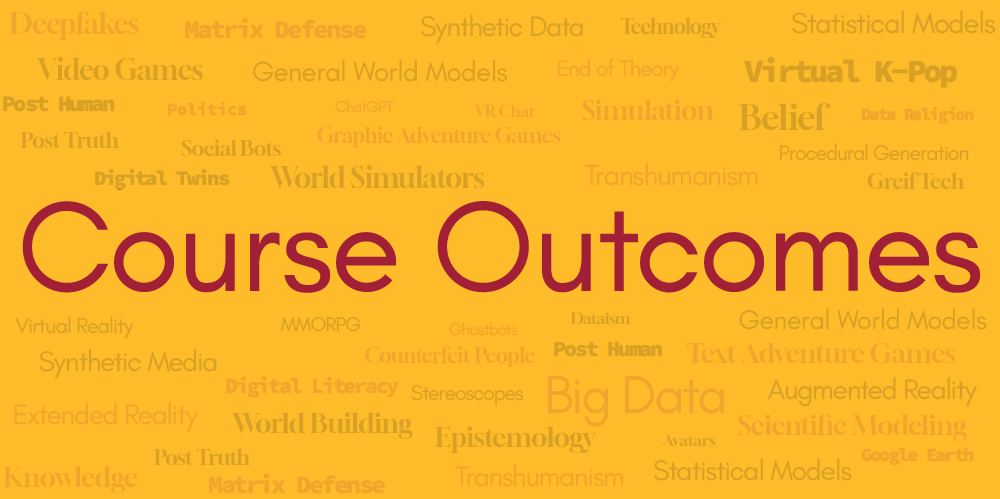Simulation and Society
Simulation and Society
CORE 499 (63580)
Spring 2025
2 Units
Thursdays 1:00PM-2:50PM
LVL 301
Dr. Curtis Fletcher
Download Syllabus

Register for CORE 499
To explore these shifts, we will define ‘simulation’ in a broad sense, as any digital representation and/or statistical model that is used as a proxy for its more complex real-world equivalent, whereby elements of the real-world version are necessarily simplified or omitted in order to replicate it within a controlled framework. For example, virtual reality simplifies real environments to provide streamlined visual representations; AI companions mimic human behavior without lived experience; and generative AI predicts patterns in order to simulate language, images, and video without actually understanding meaning or the laws of physics.
This course will provide students with the opportunity to use the technologies of extended reality (XR) and AI-powered simulation as a lens through which to explore the shifting nature of human values, interactions, and attitudes in the early 21st century. In doing so, the course will engage students in a comprehensive, interdisciplinary study of virtual worlds, preparing them to engage with our increasingly simulated digital spaces in critical and informed ways.
Students in the course will also take advantage of technologies available at the Ahmanson Lab with support from the professor and dedicated Lab staff. Students will have the chance to explore and use XR technologies, generative AI tools, bot systems, and a brain-computer interface, gaining knowledge and hands-on experience while engaging with the themes of the course.
Through readings, discussions, and hands-on exploration of relevant technologies, students will engage with the following kinds of questions:
- How have virtual worlds evolved, from their origins in early science fiction, mechanical simulations, stereoscopic technologies, and early film, to the immersive digital environments of today? And how have the altered how we represent reality?
- What philosophical questions are raised by virtual reality and immersive environments, and how does the Simulation Hypothesis challenge our understanding of reality?
- How does the increasing simulation of human behavior through data models affect political and consumer manipulation? What are the implications of the rise of artificial identities and AI-generated content for our sense of authenticity and trust in digital spaces?
- What strategies can we develop to critically navigate and verify information in increasingly automated and simulated digital spaces?
Building a Class website

See the Grading Breakdown for CORE 499

See the Learning Objectives for CORE 499
The website will provide students with the opportunity to add their own writing to the site as well as to help organize it, learning and applying critical digital literacy skills by linking various elements of the site into a clear and coherent scholarly information architecture.
To build the website, the class will utilize Scalar, a scholarly authoring and publishing platform developed at the Ahmanson Lab (this website is built with Scalar). As one of Scalar's co-creators, Dr. Fletcher has created over one-hundred thematic class websites and will actively build the website alongside students.